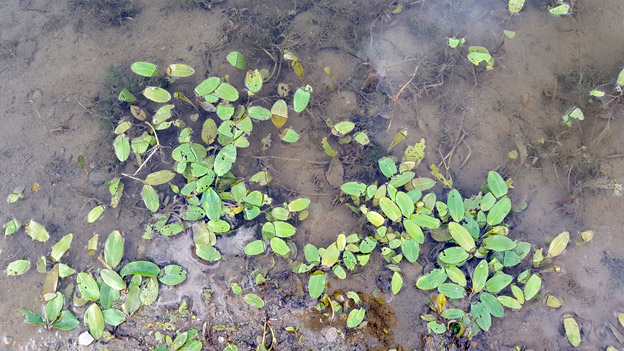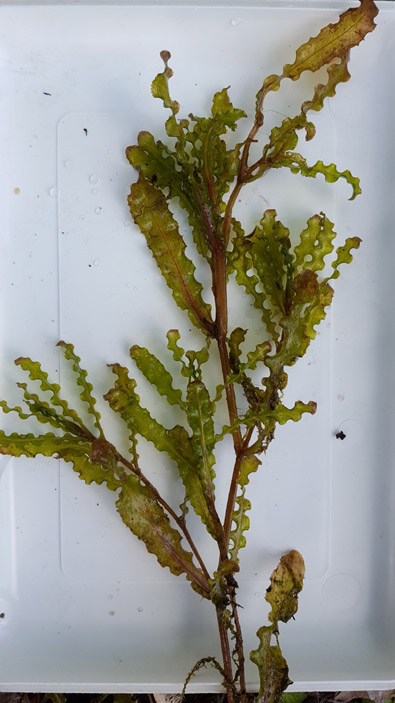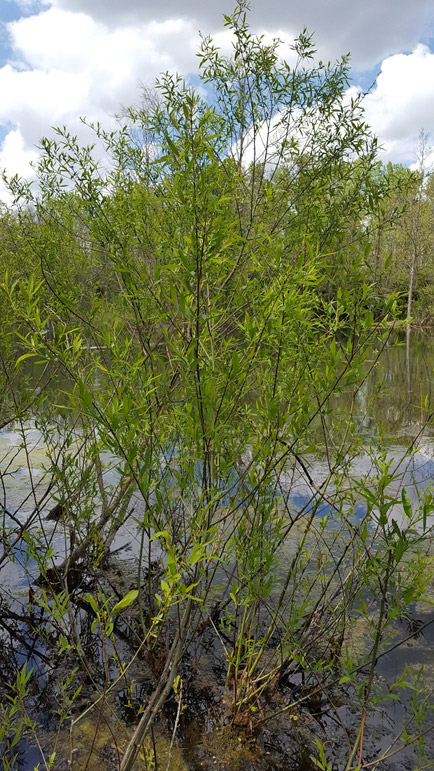Aquatic plants play a crucial role in the underwater food web in any body of water. Aquatic plants that grow entirely underwater are called submergent, while those that grow up out of the water with only their roots and bases in water are called emergent. Both categories can be found in West Lake.
Macroinvertebrates, snails, fish, and some birds feed on aquatic plants and hide within the cover they provide. Since plants photosynthesize, aquatic plants help to supply the lake’s aquatic organisms with oxygen. However, in spite of the ecological importance of aquatic plants, not all are beneficial. Some aquatic plants were brought in accidentally from other continents and have subsequently taken over aquatic habitats here in the U.S. Known as invasive species, such plants displace native aquatic plants and can interfere with recreational activities in a lake or pond.
Various types of algae can also be found within West Lake. Although not true plants, algae can photosynthesize as well. Like plants, algae also provide food and shelter for aquatic organisms. However, too much of a good thing can become a problem. As with invasive aquatic plants, some types of algae can proliferate and interfere with the normal ecological functions within a lake.
If you fish or boat in West Lake, you will likely encounter some of these photosynthetic aquatic organisms. Following are pictures and descriptions of species common in West Lake.
Photo: Eurasian watermilfoil (Myriophyllum spicatum) is an invasive submergent plant found throughout the Midwest including right here in West Lake. Although this plant provides food and habitat for aquatic organisms, it is problematic because of its profuse growth. Invasive species such as this can take over a habitat, displacing native aquatic plants and interfering with swimming and boating activity. Photo courtesy of Dr. Jon Bossley.
Photo: Curly pondweed (Potamogeton crispus) is another invasive submergent aquatic plant common in West Lake. Like other invasive aquatic plants, curly pondweed can also take over a habitat, displacing native species and interfering with recreational activities like swimming and boating. Photo courtesy of Dr. Jon Bossley.
For additional information about aquatic plants, please visit the following links:
AquaPlant – A website hosted by Texas A & M Agrilife Extension that provides identification tips and life history information for various aquatic plants.
http://aquaplant.tamu.edu/plant-identification/
Aquatic Plant Management – A PDF from Purdue Extension providing identification tips and life history information for various aquatic plants.
https://www.extension.purdue.edu/extmedia/apm/apm_3_w.pdf
A Field Guide to Common Aquatic Plants of Pennsylvania – A PDF from Penn State Extension providing identification tips and life history information for various aquatic plants.




